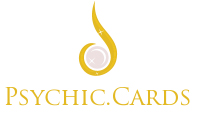Tarot card reading is popular, but there is a negative stigma attached to it, and sometimes it can look scary and be intimidating. Tarot cards were previously looked at as scary, but now there is a new outlook on the readings, and it is a belief that they can be used to tell the future to someone.
The Tarot cards are used not to tell the future but to help guide someone to understand their self and inner wisdom. The readings help people understand what they need to do in a certain situation, and they can get insight into past, future, or even current things going on in their lives. These things can be revealed to them, and they can have an understanding and determine what action they should take next.
There is no right or wrong way to do a reading, but some tips can be learned to improve the experience.
- Deck
Make sure that you get a good deck. Even try a Rider-Waite deck that is for beginners. These decks have most of the major and minor arcana, and there are 78 cards in these decks.
You can also choose a classic deck or one that you find interesting.
- Practice
Tarot reading can be hard or come naturally to some people. However, practice can help make the reading easier and help you understand what the cards are speaking to you. Choosing the right deck is important, and practicing with this deck can help you to be able to hear what it is speaking to you.
You will get used to the readings once you try it every day and give it your best shot.
- Representing You
Choose a card that represents you, and then you can use the larger spread. Ask the cards questions in the middle of the reading and see if the card you are pulling is telling you something you already know is true.
Tarot readings are not about reading the future so keep that in mind when you pull a card.
- Sleep with It
Put a card under your pillow and sleep with it. This can open up your mind and help you to gain energy from the card. Then, when you wake up in the morning, look at the card and see what it means and what meanings it has. For example, is the card connected to elements?
See if the cards give you a sign and if you are connecting with the card differently.
- First Try
Even though you might feel that you are more comfortable with someone you know, do your first reading with someone you aren’t close with. Pick a person that you don’t know and spread out the cards.
Allow yourself to say whatever you are thinking and read it no matter how crazy it might sound. Always be confident.
- Fun
Reading cards can be hard and overwhelming, but you have to ensure that you are having fun while learning.
Do this with your friends before you go out and enjoy reading the cards to them and let them know how the evening is going to go. Let it be fun and easy, and let everyone be involved if you are right; great! Let the cards decide what kind of night you are going to have, and most of all, enjoy your journey.
- Self
Reading cards can be fun to do with others but pull a card for yourself and see what you have going on. For example, if you are stressed or upset, pull a card to remind you or give advice. See if the card makes you feel better or if it causes you discomfort.
Never leave yourself out of the learning process; you can be your best teacher.
Conclusion
The point is to get to know your cards well after choosing a deck that calls or connects to you in some way. Once you feel comfortable with a deck, do some self-readings and then expand out to friends and family. Remember to keep it light hearted, especially at first, but then keep practicing and growing in your abilities.


The instructions on how to start reading Tarot cards are well-structured and accessible. I found the advice to do the first reading with someone unfamiliar particularly useful for building confidence in interpreting the cards.
The emphasis on choosing a card that represents oneself and the importance of asking thoughtful questions is a unique approach. It sounds like Tarot reading can be an enriching activity for self-reflection.
The idea that Tarot readings are more about guiding personal decisions and self-discovery rather than forecasting the future is a compelling perspective. The practice of sleeping with a card to gain energy from it is quite intriguing.
The article provides a refreshing take on Tarot reading, emphasizing personal growth and self-awareness rather than predicting the future. It’s interesting to see how the practice has evolved to be more introspective.
I appreciate the practical tips for beginners, especially regarding the choice of deck and the importance of practice. The suggestion to keep it fun and light-hearted while learning is also very helpful.